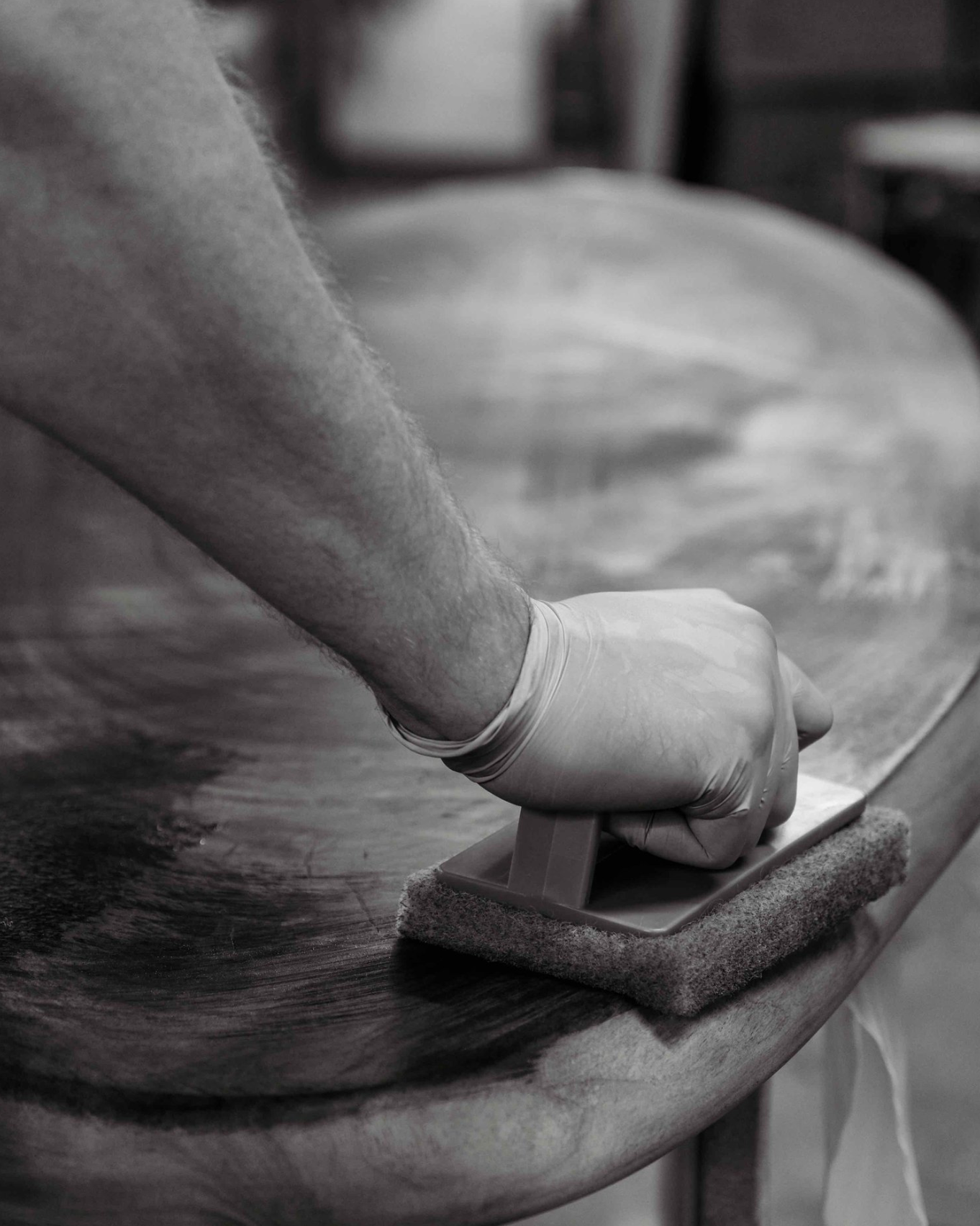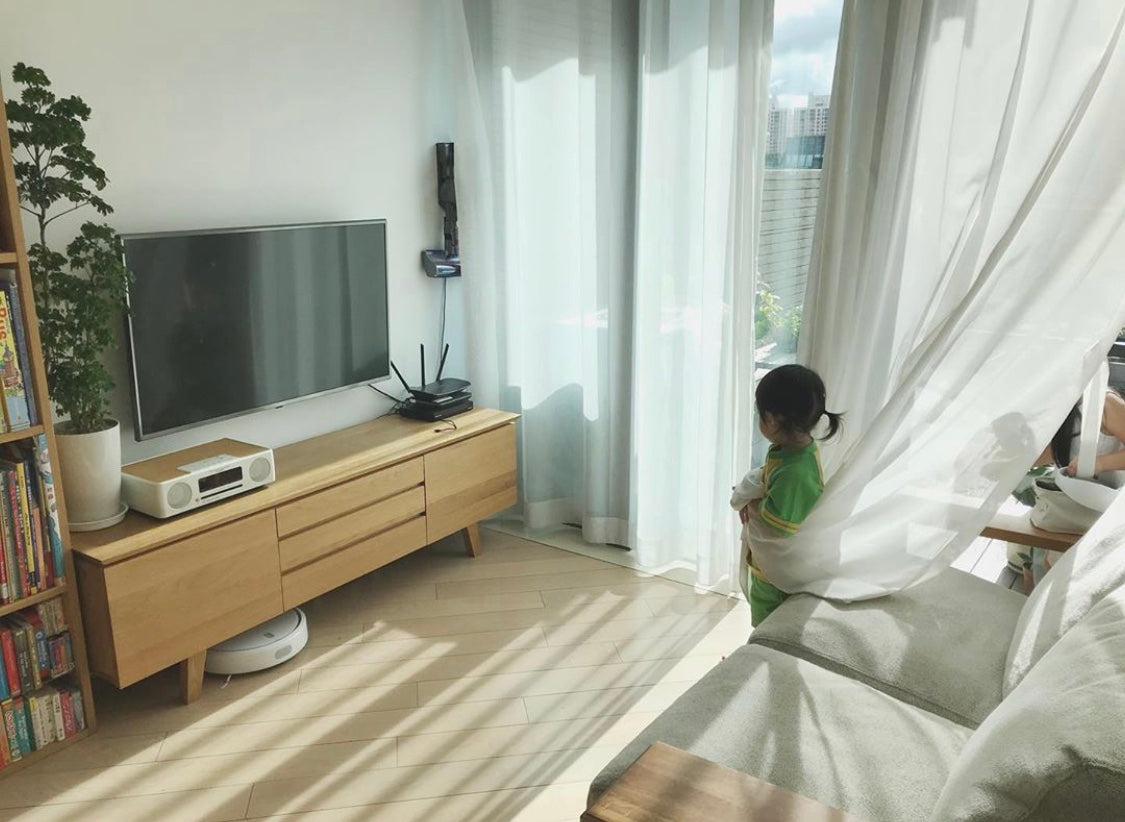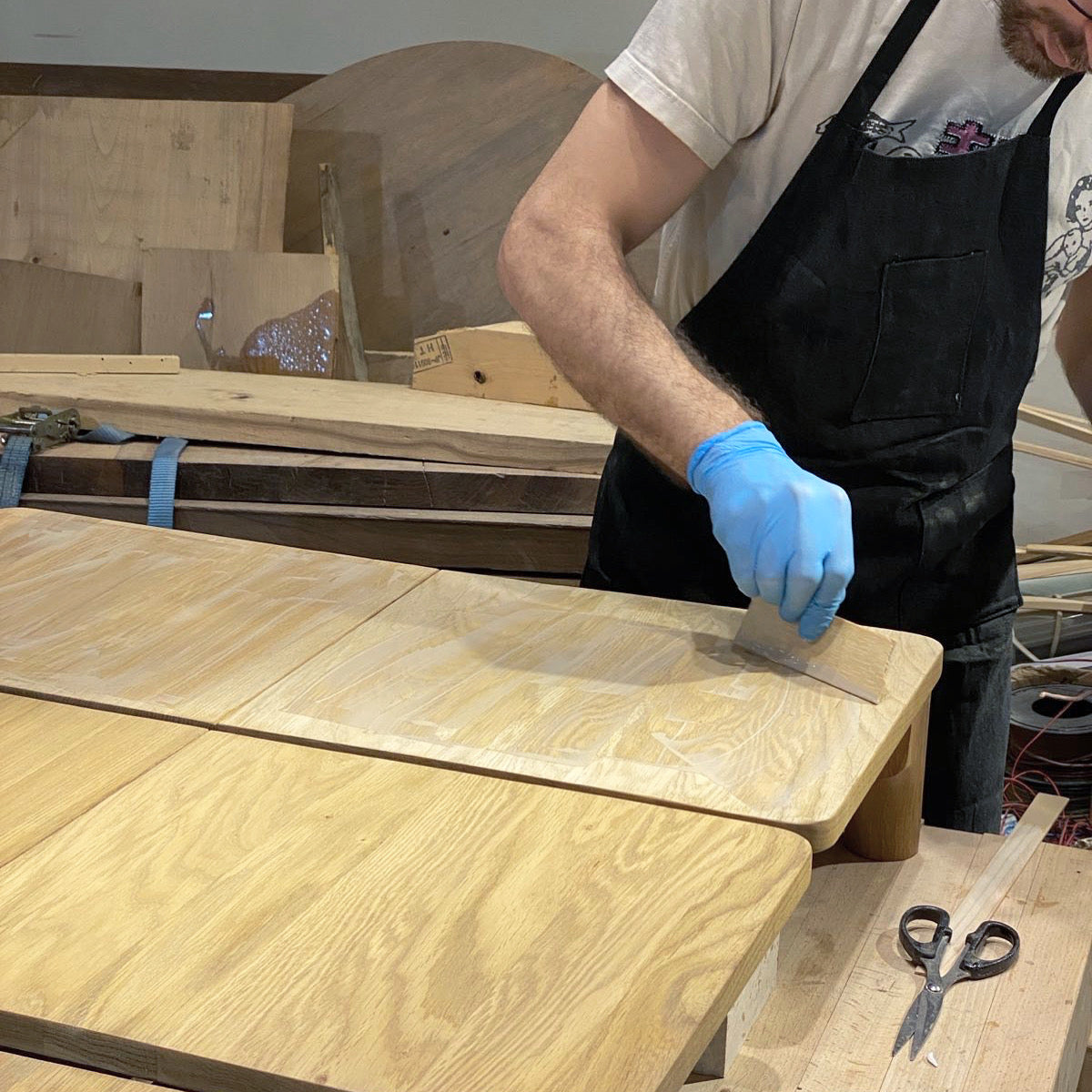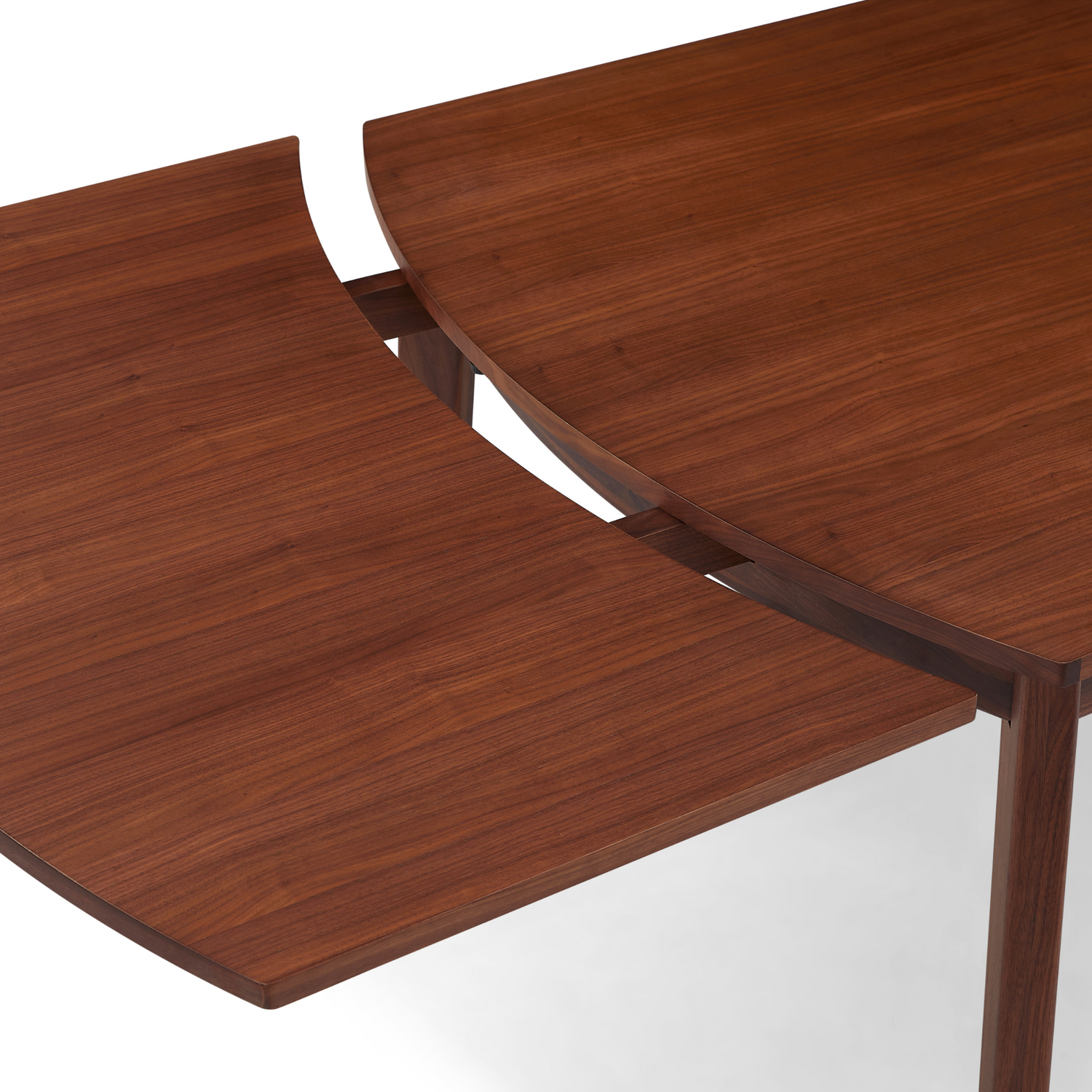Applying wood finishing is the last step in the production process, but it's just the beginning of wooden furniture. Although users may not understand the entire manufacturing process, it’s very crucial to know the type of wood finishing used. It plays a big role in how to care for and manage your wooden furniture.
Wood is a living, breathing piece that responds and reacts with the environment. And most importantly like all living creatures, wood ages. Therefore to protect and help the aging process, it’s very crucial to choose the right type of wood finishing.
NATURAL VS SYNTHETIC
There are many types of finishings in the market, but we generally classify them into two types: natural and synthetic finishing.
Synthetic finishing (varnish/lacquer) is a chemical layer that conceals the surfaces of the wood, making it water and scratch-proof. However, the concealment makes it difficult to feel the texture of the wood grain, giving it a plasticky touch. The varnish also cracks as it ages, and you must then hire woodworkers to remove the layer of varnish.
Natural finishing (wood wax) is an eco-friendly finishing made from plant extract. Through the application of natural finishing, the wood is protected by oil nourishment and the tightening of the wood fiber. The amazing texture of the wood grain also remains. Wood wax oil acts like a loose powder, it cannot completely cover up the imperfections of wood. But with the importance of health and the environment, it has become a huge trend to use non-toxic wood wax oil.
Our home is not a showroom, furniture is meant to be used and not for the sake of display. We recommend wooden furniture with a natural finish because the majority of damages like scratches, cracking, and watermark can be fixed by simple DIY methods by the everyday user like us. Although the protection may not be as good as synthetic finishing, most damages like kids drawing on the desk or spillage of wine, tea or coffee can be fixed by sanding and oiling. For situations like dry cracking, filling in wood powder and re-applying wood wax oil will do the trick.
As a designer and manufacturer, our role is similar to being a parent whereas wood furniture is our children. We cannot control their future but we can understand their properties, choose the appropriate finishing, and determine the best caring method. By doing so, we can display their best look to everyone.
Wood is like all living things, we all grow old, but how can wood grow old better? We have to consider the impact, durability, and maintenance of the product, ensuring the furniture is sustainable without adding a burden to our users. Taking all of the factors into consideration, we finish our wooden furniture with German-made non-toxic wood wax oil, as well as provide a series of care guides to assist our users in care and maintenance. As a creator, the product may only stay with us for one-tenth of its lifetime, the remaining part depends on the user.
用生命在呼吸的木材
為實木傢具抹上塗層,是製作過程的最後一道工序,但卻是一件實木傢具的始點。消費者未必需要了解生產過程,卻有必要了解所購買的實木傢具是以什麼的塗裝,因為這對日後護理影響深遠。
木材有生命,是會呼吸的有機體,懂得隨著四周環境變化而作出回應。而重要的是,像所有生命一樣,木材也隨著年月而變老,所以懂得因應不同的木材的獨特性,再選擇合適的塗層作保護,會令到一件實金傢具老得漂亮。
天然 VS 人工
市面上塗層種類繁多,大致可分為人工和天然兩種。
人工塗層 (Varnish / Lacquer): 大多以化學物油漆將木材的表面密封,形成一層膠感厚重的保護,將木材「真空」,靜止一切呼吸和變化人工塗層的好處是容易打理、耐磨,防水。但換來的是油漆會隨時間老化而起泡或裂開,一般用家是無法自行修補,需要由專業師父將油漆塗層完全磨掉再重新上油,同時膠感的保護漆,難以觸摸木紋感受到實木的溫暖。
天然塗層 (Wood Wax / Wood Oil) :以植物粹取物製成的環保塗層,以天然的油份去滋養木材,再以蠟質鎖緊木纖維,能起簡單保護作用,同時可觸摸到木材紋理。因為木蠟油質地輕薄,無法遮蓋木材的天然瑕疵,亦需要定期塗補木蠟油,維持實木傢具的光澤,以及維持穩定保護性。但當遇上破損刮痕時,透過簡單局部打磨再塗上木蠟油便可以輕易處理。而為了健康和環境著想,使用無毒的木蠟油已經成為大趨勢。
家不是陳列室,傢具是買來使用,時刻避忌著未免辛苦。如果你所選擇的傢具是以木蠟油作塗裝,不妨放膽使用,因為大部分的損傷,如刮花、開裂、水漬;一般用家無需任何技巧都可以「自行DIY修補」。天然塗層保護性是比不上人工油漆,但至少孩子當桌子像畫紙填色刮花,或者打翻紅酒茶咖啡酸鹼性飲品,可以用砂紙局部打磨 (一般於五金舖購買的砂紙即可),再重新上木蠟油即可;乾燥開裂可以木粉填充,再重新上木蠟油便歷久常新。
我們作為設計師和生產者角色好比父母,木材就像我們的孩子,無法左右他們的將來,只能夠在他們還是牙牙學語的階段,因材施教,因應不同木材的獨特性而選擇合適的塗裝,展現天然的色澤和紋理,為它添上合適的保護,為它們即將面對的社會作好準備。
木材像所有生命一樣會變老,難逃老去的命運,但如何老得好看,老得有歷練和價值呢?我們作為設計師及製造者,顧及的是產品在地球上的壽命及可持續性,落到使用者手中往後數十載的影響,產品首要是堅固耐用,其次是不為用家的日常使用帶來負擔。因此我們的實木傢俱採用德國無毒木蠟油做塗裝,同時以一系列的修護指南加以協助。假如傢具在我們手上只佔其壽命的十分一時間,餘下的責任,全賴使用者的悉心愛護,將實木傢俱的故事延續,一代一代的傳丞下去。





